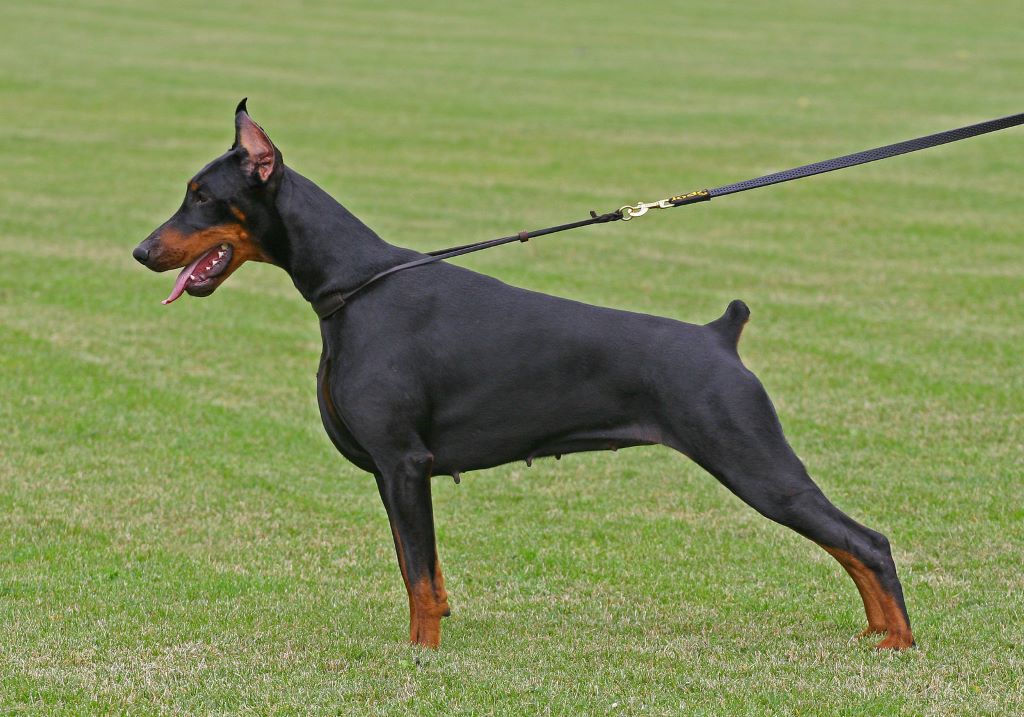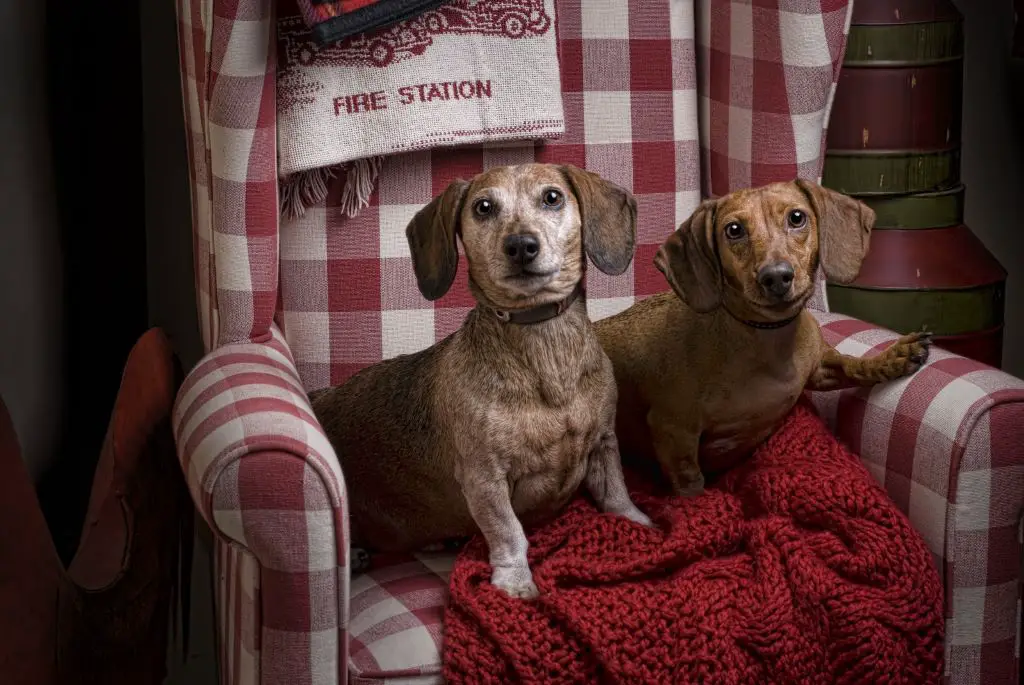Warning: Trying to access array offset on value of type bool in /home/u778996160/domains/dachshundtalk.com/public_html/wp-content/plugins/wp-word-count/public/class-wpwc-public.php on line 123
Warning: Trying to access array offset on value of type bool in /home/u778996160/domains/dachshundtalk.com/public_html/wp-content/plugins/wp-word-count/public/class-wpwc-public.php on line 123
Have you ever noticed your dog’s chest looking unusually large compared to others of its breed, or perhaps it’s always been that way? Maybe it’s the result of a diet packed with protein and regular exercise, or perhaps there’s a genetic factor at play. It could even signify an underlying health condition.
You’re likely curious about why your furry friend has such a big chest, and what implications this might have for their overall health. Well, you’re in luck! We’ll delve into everything from breed-specific characteristics to potential health risks associated with a larger chest size in dogs.
By the end of this article, you’ll not only understand why your pup sports such a robust physique but also know how best to ensure they maintain optimal health. Let’s embark on this journey together.
Key Takeaways
- Measuring chest size accurately is important and should be done using a flexible tape measure at the widest point behind the armpits.
- A big chest in dogs can indicate a deep or barrel chest, which can pose specific health risks.
- Some examples of breeds with barrel chests include Bulldogs, Boxers, and Basset Hounds.
- Understanding a dog’s body structure is crucial for their overall health and well-being, and love and proper care should be provided to all dogs, regardless of chest size.
Breed-Specific Characteristics
Believe it or not, your pooch’s robust chest might be so enormous simply because of its breed. Some dogs are practically born looking like they’ve spent their whole lives pumping iron at a doggy gym! Certain breeds, such as boxers, rottweilers, and basset hounds, are typically ‘barrel-chested.’ This term refers to a broad, deep chest that resembles a barrel. It’s a common characteristic in these breeds.
On the other hand, there’s another term you might hear: ‘deep-chested.’ Great Danes and greyhounds often fall into this category. A deep-chested dog has a chest that goes down low compared to the rest of its body. What kind of chest type do mixed-breed dogs have? Well, it depends on the particular mix of breeds involved.
Other breeds known for their big chests include bulldogs and mastiffs. Such physical characteristics aren’t just about appearance; they also relate to the dog’s strength and stamina. So don’t worry if your furry friend seems bulkier than others—it’s all part of their unique charm! Remember, understanding these breed-specific traits can help ensure your pup stays healthy and happy throughout its life.
Exercise and Muscle Development
Just like humans, your loyal friend can develop a robust physique with regular workouts and proper nutrition. Exercise and muscle development play a crucial role in shaping your dog’s body, particularly their chest area. It’s not uncommon to see dogs with barrel chests if they’ve been getting the right amount of exercise.
Here are some key points to remember:
- Deep-chested dog breeds like Greyhounds or Doberman Pinschers naturally have larger chests due to genetics.
- Some breeds can build muscle easily, such as Pitbulls or Rottweilers, giving them that broad-chested look.
- Regular exercise helps broaden your dog’s chest by developing the underlying muscles.
- Proper nutrition is also vital in ensuring that your dog develops a healthy body structure.
So why is my dog’s chest so deep? Well, it could be a combination of breed-specific traits, regular exercise, and good nutrition.
If you’re still unsure or concerned about your pet’s physical appearance, don’t hesitate to consult with a veterinarian. Remember, each breed has unique characteristics, and what may seem unusual for one might just be completely normal for another.
Nutritional Factors
It’s not all about genetics and exercise, though; your pup’s diet plays a significant role in their physical development too. Just like humans, dogs need a balanced diet filled with the right nutrients to grow healthy and strong. So, does your dog have a deep chest? This could be due to them getting the proper nutrition they need.
Now you might wonder: what’s better about barrel-chested dogs or what’s better about deep-chested dogs? While there isn’t necessarily a ‘better,’ each body type can suggest certain qualities or potential health concerns. A broad chest often indicates strength and endurance, while deep chests are common in breeds known for speed.
The chest of the dog is located between its front legs extending up towards its neck, similar to where our own chests are. What is considered the chest of the dog includes both this area and the rib cage, which houses important organs like the heart and lungs.
So remember that diet matters when it comes to your pooch’s physique. Nutrients aid muscle growth and development, potentially leading to a larger canine chest over time if combined with regular exercise.
Health Conditions Related to Size
While considering your furry friend’s physique, you should also be aware of the potential health conditions linked to their size and shape. The location of a dog’s chest, whether it’s large or small, can hint at certain health implications. For instance, deep-chested dogs are more prone to a life-threatening condition called Gastric Dilatation-Volvulus (GDV), where the stomach twists on itself.
However, there are other types of dog chests too. Here are some related issues: – Flat-chested: These dogs may struggle with respiratory problems. – Barrel chest: Associated problems include difficulty in breathing and heart disease. – Broad chest: Dogs with this build could face spinal issues. – Deep chest: As mentioned earlier, these dogs have higher chances of GDV.
Now let’s talk about another aspect – canine lipoma. This is a benign fatty tumor that can appear anywhere on your dog’s body, including its big chest. Certain breeds like Labradors and Doberman Pinschers seem more affected by this condition.
Keep an eye out for any changes in your pet’s chest size or shape; they might indicate something more than just a well-fed pup or healthy exercise habits!
The Role of Genetics
When it comes to your pup’s physique, you can’t escape the role of genetics; they hold all the cards in determining your pet’s body shape and size. These genes determine whether a dog will have a deep chest or barrel chest — two common terms used when describing a dog’s physical appearance.
| Deep-chested Dog Breeds | Barrel-chested Dog Breeds | Additional Information |
|---|---|---|
| Greyhounds | Bulldogs | Greyhounds are known for their exceptional speed and endurance. Bulldogs are muscular and have a distinctive wrinkled face. |
| Whippets | Boxers | Whippets are similar to Greyhounds but smaller in size, known for their agility. Boxers are energetic, playful, and make great family pets. |
| Borzois | Staffordshire Bull Terriers | Borzois are elegant and graceful dogs with a long, silky coats. Staffordshire Bull Terriers are strong and muscular, often referred to as “nanny dogs.” |
| Doberman Pinschers | Rottweilers | Doberman Pinschers are highly intelligent and loyal guard dogs. Rottweilers are robust and powerful, often used in search and rescue or as police dogs. |
| German Shepherds | Chesapeake Bay Retrievers | German Shepherds are versatile working dogs known for their intelligence and loyalty. Chesapeake Bay Retrievers are excellent swimmers and retrievers. |
| Great Danes | Saint Bernards | Great Danes are one of the largest dog breeds, known for their gentle and friendly nature. Saint Bernards are large and strong, often used in alpine rescues. |
| Irish Wolfhounds | Bullmastiffs | Irish Wolfhounds are gentle giants, known for their calm and affectionate demeanor. Bullmastiffs are powerful and protective, making excellent guard dogs. |
Deep-chested breeds like Greyhounds, Whippets, and Borzois are genetically predisposed to having larger chests – this is often associated with increased lung capacity for endurance running. On the other hand, barrel-chested breeds such as Bulldogs, Boxers, and Staffordshire Bull Terriers typically exhibit broad and muscular chests that contribute to their strength.
You might be determining if a dog has a deep chest by looking at its profile. If the depth of the chest reaches beyond the elbow of your dog while standing, it’s likely deep-chested. Conversely, barrel-chested dogs usually have wider bodies with more muscle mass around their ribs.
Genetics plays an integral part in these characteristics. So if your furry friend has a big chest, don’t fret – it’s just down to their DNA!
Potential Health Risks
Despite their impressive physique, deep-chested and barrel-chested dogs aren’t immune to certain health risks. One of the most alarming conditions that may affect your broad-chested dog is Gastric Dilatation-Volvulus (GDV), more commonly known as bloat. This potentially life-threatening condition occurs when a dog’s stomach becomes twisted, trapping air and causing distressing symptoms.
Here are some signs of bloat in dogs you should watch out for:
- Excessive drooling
- Restlessness or pacing
- A visibly swollen abdomen
The correlation between bloat and deep-chested dogs is significant. Examples of deep-chested dog breeds include Great Danes, Weimaraners, and Boxers, which are at higher risk for this condition. If your pup shows any symptoms indicative of bloat, immediate veterinary attention is critical.
So how is bloat treated? Treatment typically involves stabilizing the dog before surgery to correct the twisting stomach. It can be an expensive procedure but it’s essential to save your pet’s life. Remember: if you own a breed with a bigger chest, keeping an eye out for these symptoms can make all the difference in catching this dangerous condition early on without resorting to ‘finally’ or ‘in conclusion,’ it’s important to say that being aware means being prepared.
Diagnostic Procedures for Chest Size
You’re probably wondering, ‘How can I tell if my pooch has a broader chest than average?’ Well, measuring your pet’s chest is not rocket science; it’s as easy as pie. The first step in learning how to determine if a dog is deep-chested or barrel-chested is understanding the difference between these two types of chests.
Deep-chested dogs have a longer length from the backbone to the belly than the width across their chest. These breeds include Greyhounds and Dobermans. On the other hand, barrel-chested dogs are those whose width across their chest is greater than the length from their backbone to their belly, such as Bulldogs and Pugs.
To measure your dog’s chest size accurately, you’ll need a flexible tape measure. Wrap it around your pet’s body at its widest point, which generally falls directly behind its armpits for most breeds. A large measurement may indicate that your dog is either deep-chested or barrel-chested.
Knowing whether your canine companion falls into one of these categories can be beneficial because both deep-chested and barrel-chested dogs can face specific health risks due to their unique body structures. But remember, regardless of size or shape, every dog deserves love and proper care!
Tips for Maintaining Optimal Health
Let’s dive into some practical tips to ensure your furry friend is always in tip-top shape, shall we? First, it’s essential to understand that some dog breeds and breed types are usually barrel-chested. These include Bulldogs, Boxers, and Basset Hounds, among others. So if you have one of these breeds with barrel chests, don’t be overly concerned – this is their natural form.
An important aspect of maintaining optimal health in your pet involves preventing bloat in deep-chested canines. Bloat or Gastric Dilatation-Volvulus (GDV) is a painful condition where the stomach fills with gas and twists on itself. It can be fatal if not treated promptly. To prevent this condition, feed your dog smaller meals more frequently throughout the day instead of one large meal.
If bloat does occur, treating it as soon as possible is crucial for survival. The key symptoms include restlessness, excessive drooling, and an enlarged abdomen. If you notice these signs in your dog, get them to a vet immediately.
Remember, each breed has its unique characteristics and predispositions; therefore, don’t try to exceed the natural form of the breed but rather provide appropriate care based on their specific needs. This way, you’ll ensure a happy and healthy life for your four-legged companion!
Frequently Asked Questions
How does my dog’s age affect its chest size?
Just like humans, your dog’s chest size can change with age. In their puppy years, it’s small and adorable, but as they grow older and stronger, the chest expands to support their muscular structure.
Can neutering or spaying my dog influence its chest size?
Neutering or spaying your dog won’t directly affect its chest size. These procedures can impact weight distribution, potentially leading to a fuller appearance overall, but they don’t specifically increase chest size.
Does my dog’s gender play a role in its chest size?
You might be curious, does your dog’s gender affect its chest size? In fact, it doesn’t. Regardless of whether your furry friend is male or female, their chest size is primarily determined by their breed and genetics.
Can the environment where my dog lives affect its chest size?
The environment where your dog lives doesn’t typically impact its chest size. Factors like breed, genetics, and nutrition play larger roles. Exercise can influence muscle development but won’t significantly alter the chest’s structure.
Are there any specific behaviors that can indicate that my dog’s chest size is abnormal?
If your dog’s chest appears bloated, overly large, or they’re struggling to breathe, these may be signs of an abnormal chest size. Difficulty moving or any changes in behavior also warrant a vet visit.
Conclusion
So, you’re wondering why your furry friend has such a big chest. It could be due to their breed, exercise regimen, diet, or even health conditions. Remember, it’s not just about looks – a large chest can indicate potential health risks.
Let’s love them enough to make sure they’re truly healthy inside and out. After all, isn’t that what being the best pet parent is all about?









